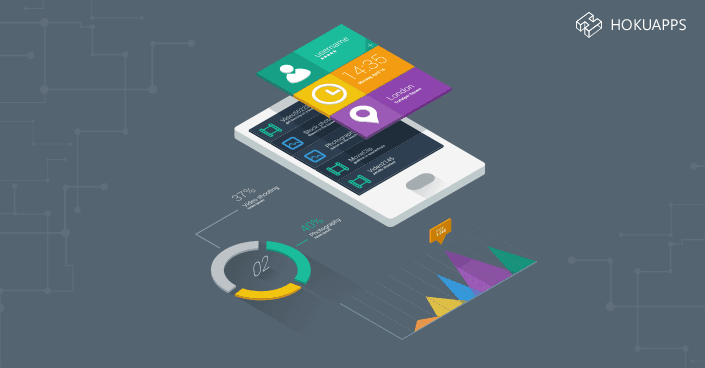- Products
- Solutions
- Services
- Resources
- Customer Success
- Company
- Sign In
- Contact Us

Digital Transformation enabler helping enterprises evolve by connecting technology
Take a look at upcoming webinars and special events
HokuApps news and media coverage
Be with the best. Solve real problems
Get in touch with our experts here
Explore our extensive collection of online resources here
Information and insight on transformation to the Digital Workplace
Quick Guides provide concise information on a variety of topics
Discover the essence of HokuApps’ products
Learn all about HokuApps’ cutting-edge enterprise mobility technology

A large and growing number of business leaders now recognize the need to make app development a priority, many still struggle in this area. Gatepoint Research found that among more than 125 IT executives, 77 percent said their companies either occasionally or frequently run into software production release problems.
Application development initiatives were once limited solely to the most technologically advanced companies in select industries. That is no longer the case. In recent years, app development has become a priority for organizations of all sizes and sectors – including government agencies and departments. A 2013 Vanson Bourne survey of IT decision-makers found that only 7 percent of companies had fully implemented mobile app strategies by that time, while more than half had not implemented any such mobile app effort whatsoever. In 2015, a follow-up survey found 52 percent of IT decision-makers had fully implemented mobile app strategies and only 11 percent had made no progress in this area – an almost complete reversal in the numbers in just two years.
While there is no single solution guaranteed to eliminate these issues for every organization across the board. Rapid Application Development (RAD) Platforms have the potential to dramatically alleviate many of the biggest factors creating these problems. With app development stakes continuing to rise, now is the ideal time for decision-makers to consider leveraging RAD for their own app development efforts.
RAD Platforms represent such a powerful option for a wide range of organizations due to two key components: They are low code and based in the cloud.
In traditional software development, every piece of a new application needs to be built from the ground up. That requires programmers to write thousands and thousands of lines of code – a process that is incredibly time-intensive, and therefore costly, and demands a high level of skill. A low-code platform, however, features a modular approach with essentially “pre-packaged” interfaces, each of which can perform a specific workflow within the application. Thousands of lines of code – a process that is incredibly time-intensive, and therefore costly, and demands a high level of skill. A low-code platform, however, features a modular approach with essentially “pre-packaged” interfaces, each of which can perform a specific workflow within the application. This low-code design allows developers to pick and choose whichever modules they require, combining them together to make an application that is both unique and fully customized, and yet can be built in a fraction of the time and with a much lower skill requirements.
By being based in the cloud, rather than the company’s own IT infrastructure, RAD Platforms are much more stable than on-premise alternatives. All of the various components will already have been fully tested and proven to work in the cloud environment. While there’s no need to ensure compatibility between the new app and all of the various on-premise IT infrastructure systems and processes. Such compatibility issues can cause major headaches and delays during the testing and deployment of new apps developed in-house. A 2013 study from EDC determined that cloud platforms cut down on software development time by 11.6 percent on average.